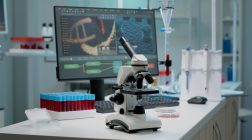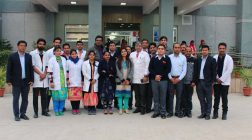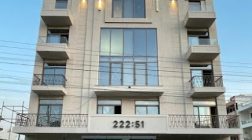Inheritance of cure
Diabetes is partially hereditary, but diabetology seems to run in this Chennai family. The late Dr M Viswanathan’s extended family has three of the most famous living diabetologists in the country — Dr V Mohan, Dr Vijay Viswanathan and Dr A Ramachandran — and from them has come a majority of research papers India has produced on the specialty.
The family tree — complete with the wives, sisters, children and their spouses, most of who are either diabetologists or experts in allied fields — may look Marquezian, but there’s no magical realism holding it together. It’s more a tale of clinical separation of two brothers and a brother-in-law, their own struggles to the top, and the cumulative contribution to a battle against a disease that attacks a million Indians every year.
You can’t escape the name Dr V Mohan if you are searching for studies on epidemiology of diabetes; Dr Vijay Viswanathan has to his credit a bunch of papers on diabetic foot care or TB among diabetics; and any serious discussion on primary prevention of diabetes would be incomplete without Dr A Ramachandran’s contribution. A random search for the most sought after diabetologists in the country will lead you to the trio who became what they are today, under the tutelage ofDr M Viswanathan.
Not for nothing is Dr Viswanathan, who came from Irinjalakkuda in Kerala to Chennai to study medicine at Stanley Medical College, considered the father of diabetology in India: He set up India’s first centre for diabetes, MV Hospital for Diabetes in 1954, 11 years before the first drug for the disorder hit the market. When being a diabetic meant shunning rice, Dr Viswanathan allowed his patients to have their staple grain along with high-fibre dishes. “Soon he had thousands of rice lovers from Tamil Nadu, Andhra Pradesh and Kerala eating out of his hands, literally,” says Dr Vijay who has inherited the MV Hospital brand. Even today, Dr Viswanathan’s high carbohydrate-high fibre diet remains a standard prescription for diabetics.
But perhaps his greatest gift to society was initiating his two sons into the branch of medicine, and finding a diabetologist husband for his elder daughter Shobhana.
In 1974, Dr Ramachandran married Shobhana, a dietician, and joined Dr Viswanathan. MV Hospital became a formidable business and a peerless specialty centre by 1981 when Dr Mohan, then 27, joined his father. Dr Vijay, ten years junior, would eventually replace Dr Mohan in 1991 when the elder brother parted ways with his father to establish his own centre.
MV Hospital witnessed another separation in 2007, when Dr Ramachandran moved out to establish a diabetes hospital in Egmore. “Every separation was painful, but all of us now realise that it was for each one’s good,” says Dr Mohan, who set up a diabetes specialities centre at Gopalapuram. From there, he would produce over 800 research papers —probably the highest for a practising doctor anywhere in the world. Necessitating such separations were as much differences in goals and styles as the urge to excel independently. “I wanted MV to branch out, my father wanted to consolidate the existing setup,” says Dr Mohan. “We were all a happy, successful family as long as the first generation was involved.
With the next ing up, I saw succession issues. It was time for me to leave.” T he 2007 division wasn’t so smooth. With Dr Viswanathan’s death in 1996, and Dr Ramachandran’s two daughters being groomed, questions of inheritance of the MV legacy loomed. “It was getting a bit crowded,” says Vijay. “Either Dr Ramachandran or I had to move out.”
Auditors had to work out a settlement. Dr Vijay, the youngest son would keep MV, Dr Ramachandran would get the Adyar branch. Says Ramachandran, “Now I think I should have done it much earlier, for I would’ve got more years to build my own hospital.” His India Diabetes Research Centre has focused on use of IT in diabetes care, the latest being a study published in Lancet on how SMS could be used to prevent the disorder.
The brothers and the in-law remain professional rivals, but they sometimes collaborate for research. WHO collaborators for different diabetology programmes, each one has carved a niche-Dr Mohan in epidemiology, Dr Ramachandran in primary prevention and Dr Vijay in diabetic foot care.
But there have been differences. Early this year India banned diabetic drug pioglitazone after Dr Mohan wrote about the risk of urinary bladder cancer. Dr Ramachandran called it a knee-jerk reaction. Dr Mohan wasn’t amused. Dr Ramachandran says his opinion was based on his study that found no cancer risk associated with the drug. “I have respect for Dr Mohan. I am sure he has his scientific reasons to argue his point.” The ban was revoked.
What if the big family remained together? “Then MV Hospital would have become a Mayo Clinic or John Hopkins Institute,” says Dr Mohan. “But, in a way, it was good. Now people have three great centres of diabetology treating people and moving towards a possible cure.”
That may hold good for the next generation as well. Dr Mohan’s daughter and son-in-law; Dr Ramachandran’s two daughters and their husbands; and Dr Vijay’s son are raring to inherit the quest for cure.










